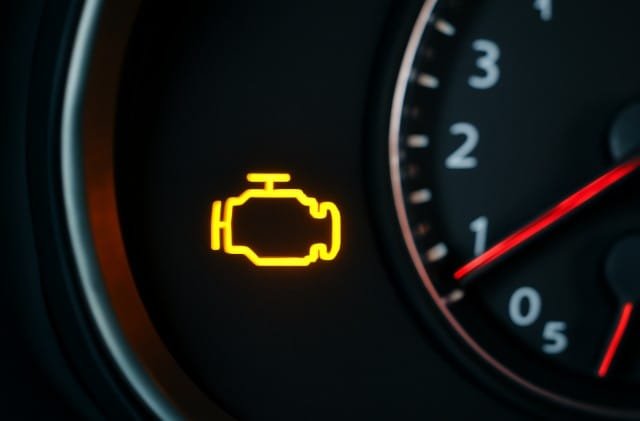The check engine light is one of the most recognizable warning signs in your vehicle’s dashboard. However, a blinking check engine light is a different situation altogether. Unlike the steady glow of a check engine light indicating a minor issue, a flashing light signals something more urgent and potentially damaging to your car’s engine. If your check engine light is flashing, it’s important not to ignore it.
This article will explore the common causes of a flashing check engine light, the risks associated with it, and the steps you can take to fix the issue before it worsens.
What Does a Flashing Check Engine Light Mean?
A blinking check engine light is an urgent warning that typically indicates an engine misfire or another critical issue. Unlike a steady check engine light that might point to minor problems like a loose gas cap or a malfunctioning sensor, a flashing light often suggests something more severe, such as a misfire that is causing unburned fuel to be sent into the exhaust system. This can lead to significant damage to your car’s catalytic converter and other key components if left unaddressed.
Common Causes of a Flashing Check Engine Light
Several different issues can trigger a flashing check engine light. Here are some of the most common causes:
1. Engine Misfire
One of the most frequent causes of a blinking check engine light is an engine misfire. Misfires occur when one or more cylinders fail to ignite properly, leading to a loss of power and rough engine performance. This is often caused by faulty spark plugs, damaged ignition coils, or a problem with the fuel injectors. Misfires lead to unburned fuel entering the exhaust system, which can severely damage the catalytic converter.
2. Faulty Catalytic Converter
A malfunctioning catalytic converter can also trigger a flashing check engine light. If the engine misfires or there is excess fuel in the exhaust, it can cause damage to the catalytic converter, which is responsible for converting harmful gases into less toxic emissions. A blinking check engine light in this case indicates that the converter is at risk of failure, and it should be addressed immediately to avoid costly repairs.
3. Fuel System Issues
Fuel system problems, such as clogged fuel injectors or a failing fuel pump, can also cause a check engine light blinking. If the fuel system is not delivering the right amount of fuel to the engine, it can cause the engine to misfire and create imbalance, resulting in a flashing check engine light. These issues can also lead to poor performance and reduced fuel efficiency.
4. Bad Oxygen Sensors
Your vehicle’s oxygen sensor monitors the levels of oxygen in the exhaust gases and ensures the engine is running efficiently. A faulty oxygen sensor can lead to an improper air-fuel mixture, causing the engine to misfire. A blinking check engine light can occur when the sensor fails, leading to poor engine performance and decreased fuel economy.
5. Overheating Engine
An engine that is running too hot can trigger a flashing check engine light. Overheating can be caused by a variety of issues, including low coolant levels, a faulty radiator fan, or a malfunctioning thermostat. If the engine continues to overheat, it could lead to serious internal damage, such as a warped cylinder head or blown gasket.
Risks of Ignoring a Flashing Check Engine Light
Ignoring a blinking check engine light can lead to severe consequences. While a steady check engine light may indicate a minor issue, a flashing light indicates that the problem is urgent and could cause significant damage to your vehicle’s engine. Some risks associated with ignoring the flashing light include:
1. Catalytic Converter Damage
If the check engine light is flashing due to an engine misfire or excess fuel in the exhaust, it could damage your catalytic converter. A failing catalytic converter can be costly to replace and may also affect your vehicle’s overall performance.
2. Engine Damage
A flashing check engine light often indicates that your engine is misfiring, which can cause internal damage to components such as pistons, valves, and the engine’s cylinder heads. Over time, this can result in permanent engine damage, requiring expensive repairs or even a full engine replacement.
3. Decreased Fuel Efficiency
Ignoring a blinking check engine light could result in decreased fuel efficiency. Misfires, faulty oxygen sensors, and other issues can cause the engine to burn more fuel than necessary. This will increase your fuel costs over time and make your vehicle less efficient.
4. Safety Concerns
If your car is misfiring or the engine is overheating, it can lead to dangerous driving conditions. A misfiring engine may cause loss of power, and an overheating engine can cause it to stall unexpectedly, putting you and other drivers at risk.
How to Fix a Flashing Check Engine Light
If your check engine light is flashing, it’s important to take immediate action to prevent further damage. Here’s what you should do:
1. Pull Over and Turn Off the Engine
If you notice the check engine light flashing while driving, it’s crucial to pull over safely and turn off the engine. Continuing to drive with a flashing light can cause more severe damage, especially if the issue involves engine misfires or overheating.
2. Check for Obvious Problems
Once the engine is off, check for any obvious issues that may be causing the flashing light. Ensure that the gas cap is securely fastened, as a loose or damaged gas cap can sometimes trigger the check engine light.
3. Scan the Vehicle for Diagnostic Codes
After ensuring that no obvious issues are present, you can use an OBD-II scanner to read the diagnostic codes stored in your vehicle’s computer. These codes will give you insight into what’s causing the blinking check engine light. Many auto parts stores offer free OBD-II scanning services, or you can take the vehicle to a mechanic.
4. Consult a Mechanic for Diagnosis and Repair
Once you’ve identified the problem with the diagnostic codes, take your vehicle to a trusted mechanic who can properly diagnose the issue. Whether it’s replacing spark plugs, fixing a faulty oxygen sensor, or repairing a fuel system problem, a mechanic will have the expertise to resolve the issue and stop the flashing check engine light from returning.
5. Regular Maintenance
To avoid future issues with your check engine light flashing, ensure that you follow your vehicle’s recommended maintenance schedule. Regular oil changes, air filter replacements, and inspections of critical components like the ignition system can help prevent major engine problems.
Conclusion
A flashing check engine light is a serious issue that should never be ignored. It typically signals an engine misfire or other critical problems that could lead to expensive repairs and potentially dangerous situations. By addressing the flashing light promptly, you can avoid costly damage to your engine and ensure your vehicle remains in optimal condition.
If your check engine light is flashing, stop driving immediately, check for obvious issues, and have the vehicle diagnosed and repaired by a professional. Regular maintenance and timely repairs will help keep your car running smoothly and safely for years to come.


